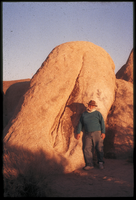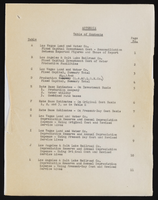Search the Special Collections and Archives Portal
Search Results

Claude Warren in front of a boulder: photograph
Date
Archival Collection
Description
Slide from the Elizabeth von Till and Claude N. Warren Professional Papers (MS-00906) -- Elizabeth von Till Warren Papers -- Personal papers -- Claude slides, photographs, negatives: Nevada research, California research, Idaho research, Zimbabwe trip, England research, England trip, holiday slides file.
Image

The Allegiant Stadium construction site along Dean Martin Drive, looking north-northwest in Las Vegas, Nevada: digital photograph
Date
Archival Collection
Description
Photographed as part of the UNLV Special Collections and Archives' Building Las Vegas collecting initiative started in 2016. This photo series documents ongoing construction work at the Allegiant Stadium.
Image

Parking for construction workers at the Allegiant Stadium construction site, looking south-southeast in Las Vegas, Nevada: digital photograph
Date
Archival Collection
Description
Photographed as part of the UNLV Special Collections and Archives' Building Las Vegas collecting initiative started in 2016. This photo series documents ongoing construction work at the Allegiant Stadium.
Image







